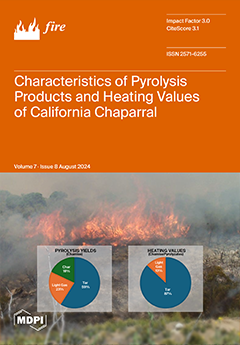Savannas play a key role in estimating emissions. Climate change has impacted the Cerrado savanna carbon balance. We used the burned area product and long-term field inventories on post-fire vegetation regrowth to estimate the impact of the fire on greenhouse gas emissions and net carbon dioxide (CO
2) emissions in the Cerrado savanna between 1985 and 2020. We estimated the immediate emissions from fires, CO
2 emissions by plant mortality, and CO
2 removal from vegetation regrowth. The burned area was 29,433 km
2; savanna fires emitted approximately 2,227,964 Gg of CO
2, 85,057 Gg of CO, 3010 Gg of CH
4, 5,103 Gg of NO
x, and 275 Gg of N
2O. We simulated vegetation regrowth according to three fire regime scenarios: extreme (high fire frequency and short fire interval), intermediate (medium fire frequency and medium fire interval), and moderate (low fire frequency and long fire interval). Under the extreme and intermediate scenarios, the vegetation biomass decreased by 2.0 and 0.4% (ton/ha-year), while the biomass increased by 2.1% under a moderate scenario. We converted this biomass into CO
2 and showed that the vegetation regrowth removed 63.5% of the total CO
2 emitted (2,355,426 Gg), indicating that the Cerrado savanna has been a source of CO
2 to the atmosphere.
Full article





